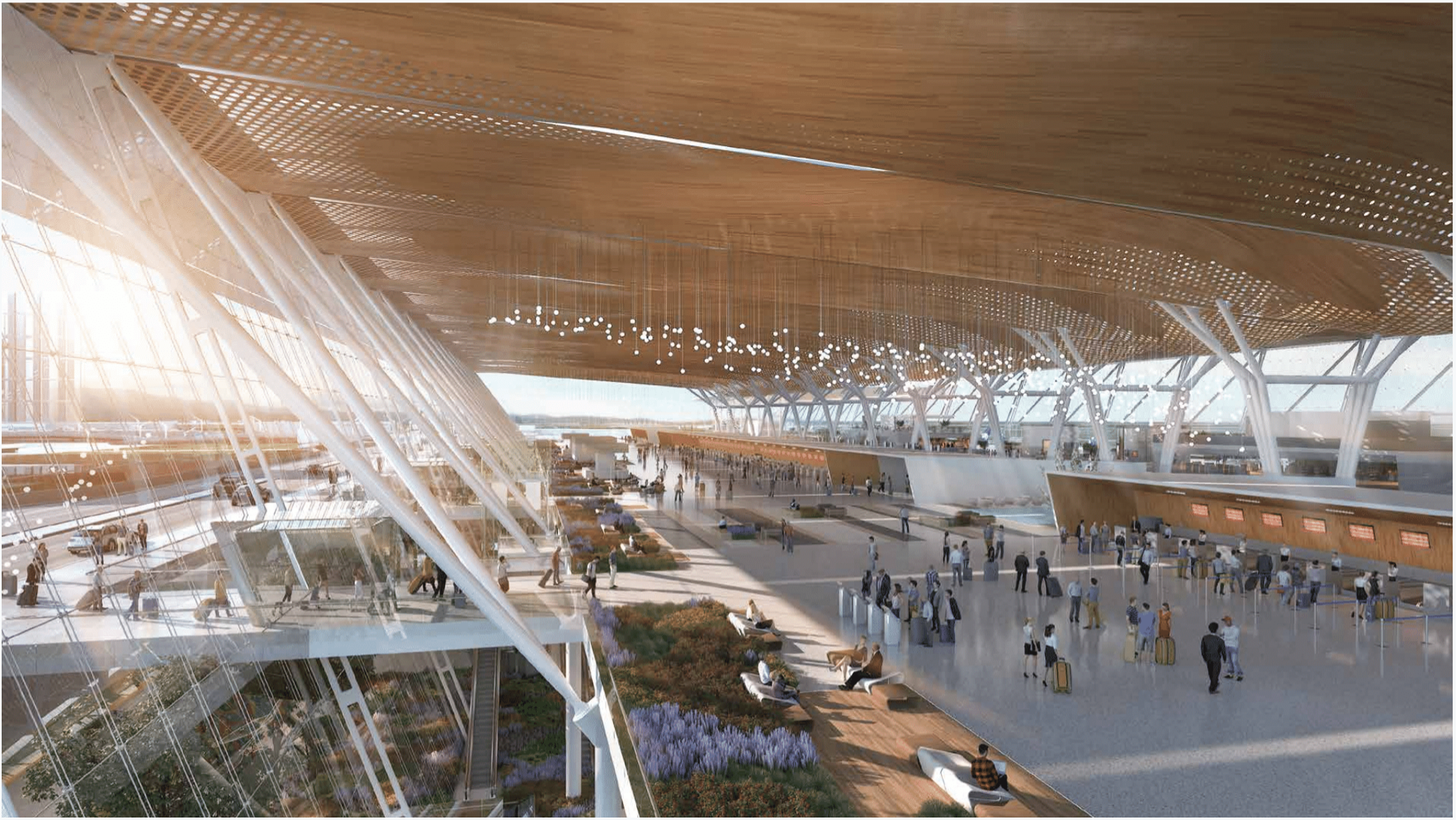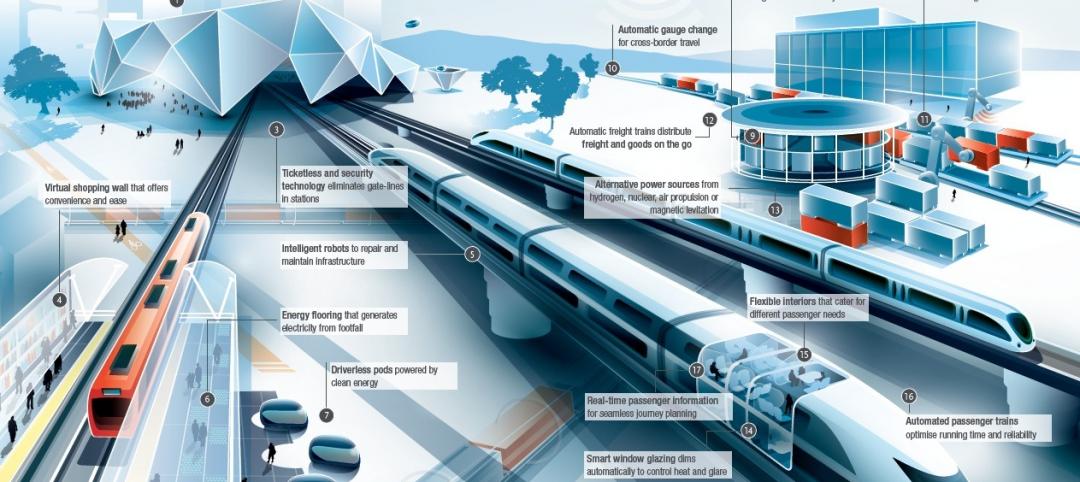Guadalajara Airport Terminal 2 will be a 30 gate, 1.2 million-sf terminal that places the passenger experience at the center of the design. It will also be one of the first net-zero airports in the world.
In order to reach this lofty goal, the terminal design includes research-backed, sustainable design strategies like solar energy harvest points, improved daylighting, insulation, glare control, shading, natural ventilation combined with economizer cooling, high performance mechanical systems, and building management systems. The design will reduce the airport’s energy use by 60% and its carbon footprint by over 90% – the proposed terminal would emit only 2,814 metric tons of CO2 each year. The facility will include landscaping that is continued from the exterior into the interior of the space.
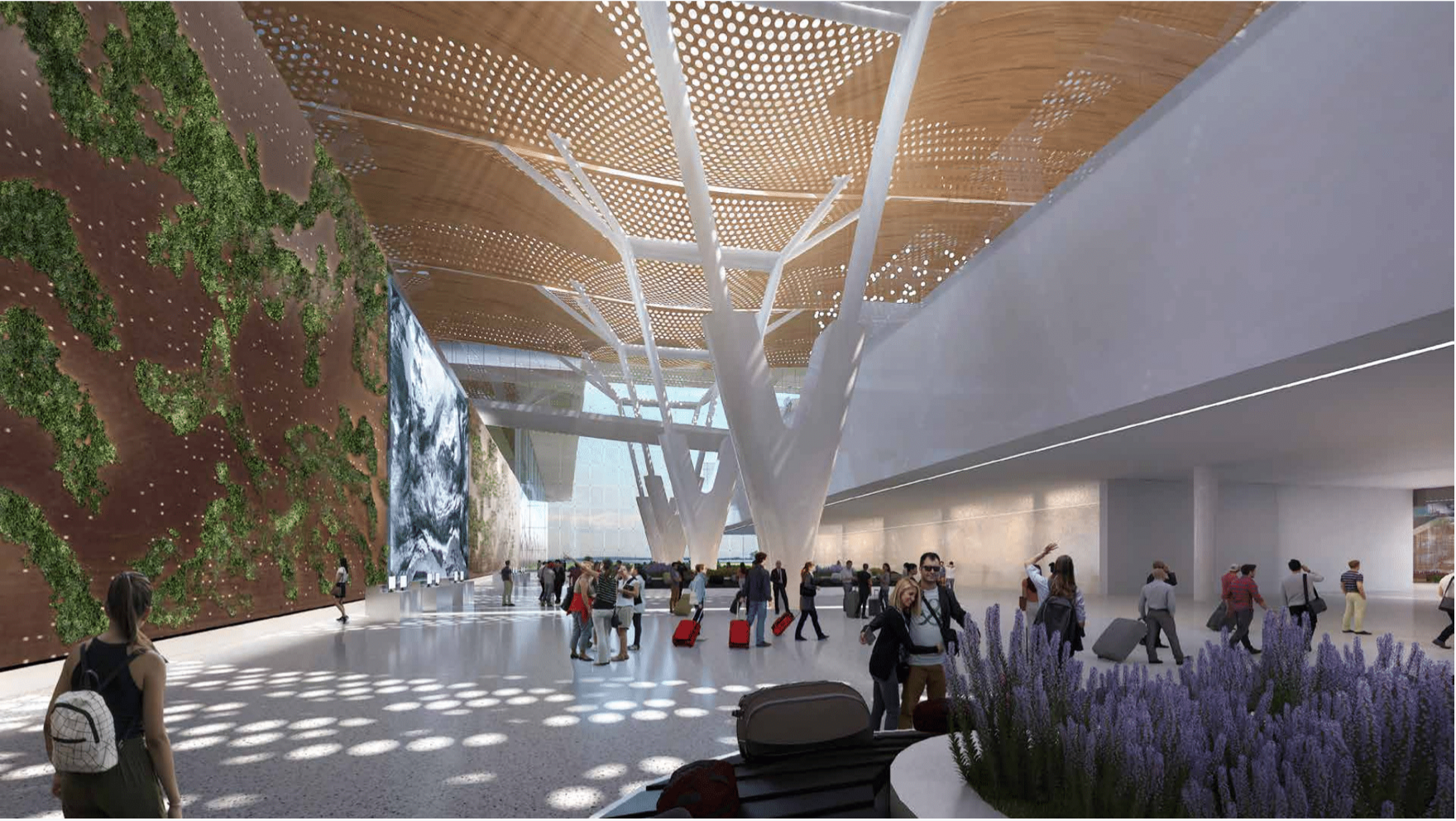
The project, which is being designed from the ground up, will include biophilic plant features, a spa, a gym, prayer and meditation rooms, and local art. Local Mexican culture was a key design element for the project, with CallisonRTKL attempting to tell a tale of regionalism through a concept dubbed “The Soul of Guadalajara." Inspiration for the terminal design is rooted in the flight of the Mexican Eagle and features such as canyon-like ceilings and agave-inspired structural elements pay homage to the surrounding area.
Two local art galleries will also be included that showcase a variety of art from abstractions to interactive media. “It’s important to us that the airport reflects the culture of its destination from departures to arrivals,” said Liliana Bernardis, Senior Associate in CRTKL’s Mexico City office, in a release. “We want passengers to feel entrenched in local art and landscaping every step of the way.”
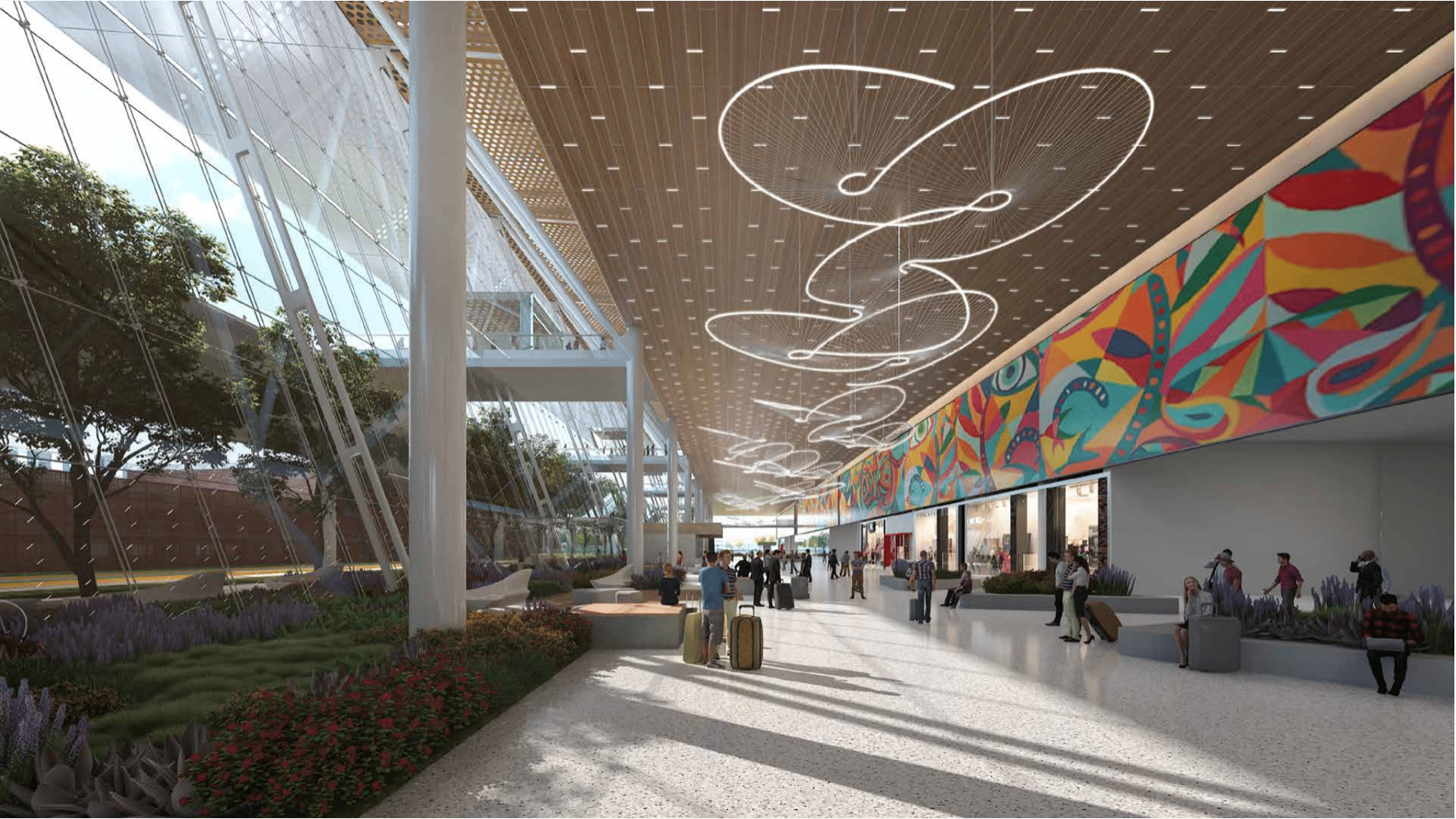
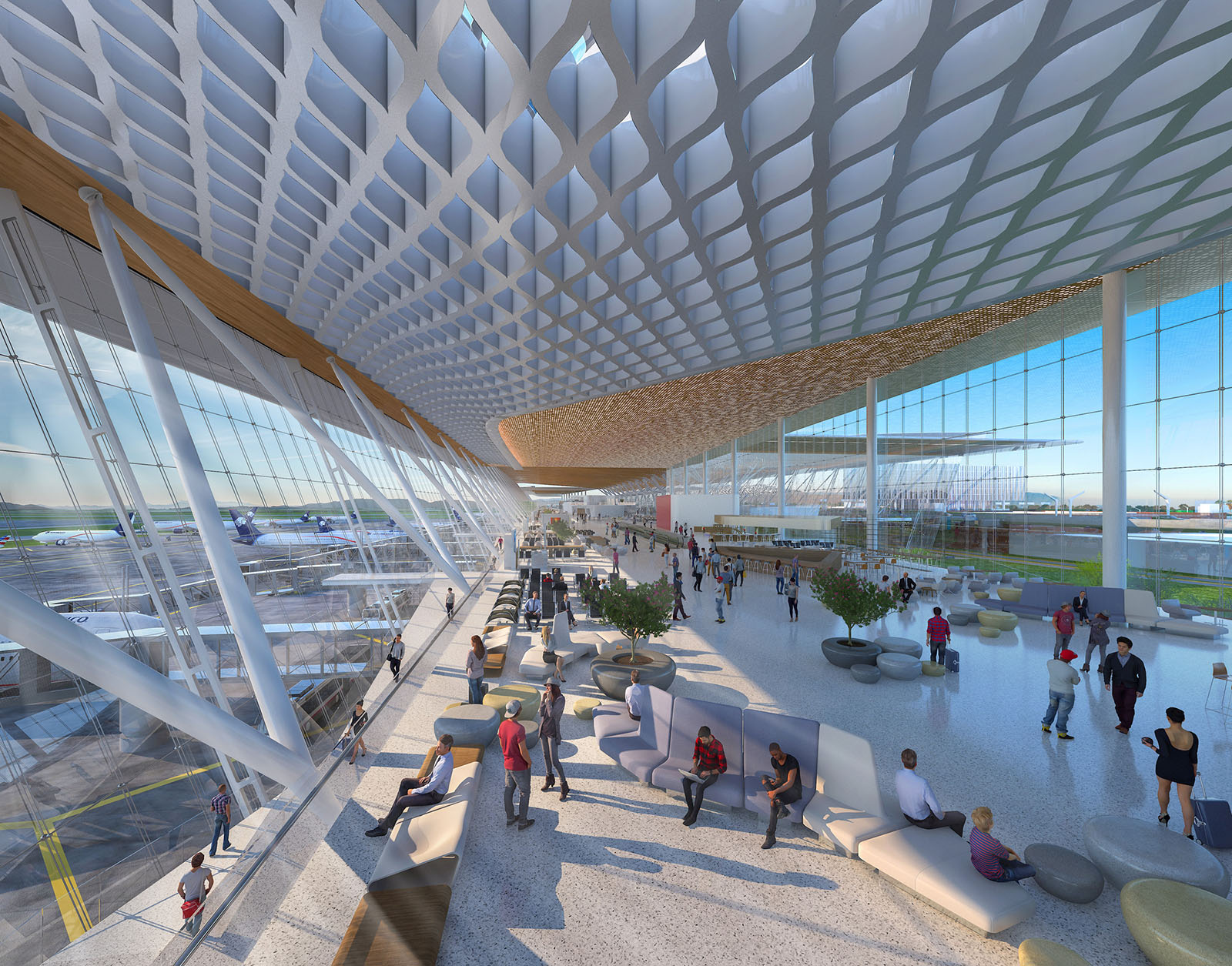
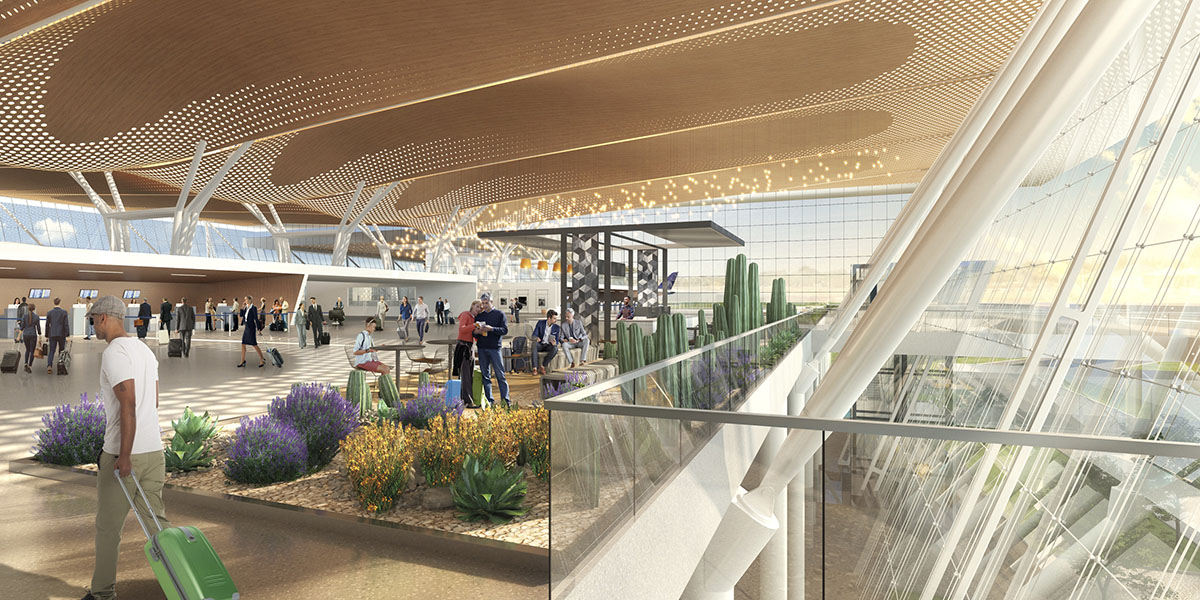
Related Stories
| Jul 18, 2014
Engineering firms look to bolster growth through new services, technology [2014 Giants 300 Report]
Following solid revenue growth in 2013, the majority of U.S.-based engineering and engineering/architecture firms expect more of the same this year, according to BD+C’s 2014 Giants 300 report.
| Jul 18, 2014
Top Engineering/Architecture Firms [2014 Giants 300 Report]
Jacobs, AECOM, Parsons Brinckerhoff top Building Design+Construction's 2014 ranking of the largest engineering/architecture firms in the United States.
| Jul 18, 2014
Top Engineering Firms [2014 Giants 300 Report]
Fluor, Arup, Day & Zimmermann top Building Design+Construction's 2014 ranking of the largest engineering firms in the United States.
| Jul 18, 2014
Top Architecture Firms [2014 Giants 300 Report]
Gensler, Perkins+Will, NBBJ top Building Design+Construction's 2014 ranking of the largest architecture firms in the United States.
| Jul 18, 2014
2014 Giants 300 Report
Building Design+Construction magazine's annual ranking the nation's largest architecture, engineering, and construction firms in the U.S.
| Jul 7, 2014
7 emerging design trends in brick buildings
From wild architectural shapes to unique color blends and pattern arrangements, these projects demonstrate the design possibilities of brick.
| Jul 2, 2014
Emerging trends in commercial flooring
Rectangular tiles, digital graphic applications, the resurgence of terrazzo, and product transparency headline today’s commercial flooring trends.
| Jun 30, 2014
Arup's vision of the future of rail: driverless trains, maintenance drones, and automatic freight delivery
In its Future of Rail 2050 report, Arup reveals a vision of the future of rail travel in light of trends such as urban population growth, climate change, and emerging technologies.
| Jun 18, 2014
Arup uses 3D printing to fabricate one-of-a-kind structural steel components
The firm's research shows that 3D printing has the potential to reduce costs, cut waste, and slash the carbon footprint of the construction sector.
| Jun 12, 2014
Austrian university develops 'inflatable' concrete dome method
Constructing a concrete dome is a costly process, but this may change soon. A team from the Vienna University of Technology has developed a method that allows concrete domes to form with the use of air and steel cables instead of expensive, timber supporting structures.


